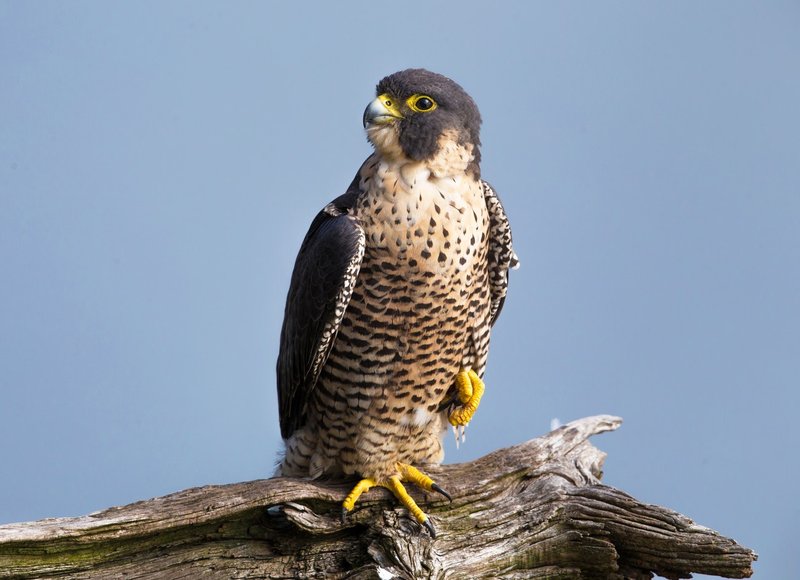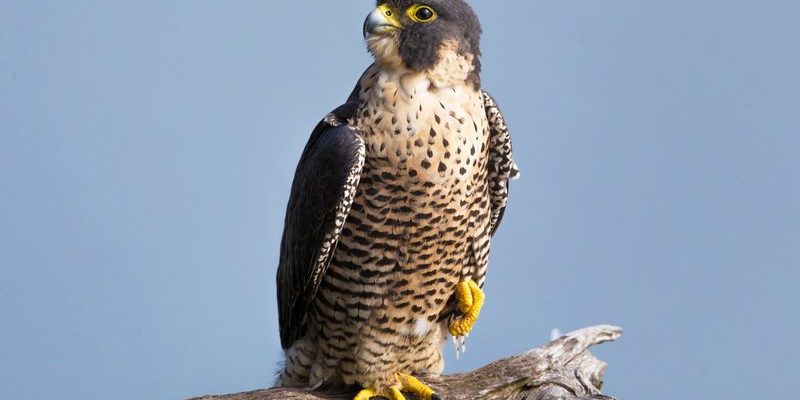
The Peregrine Falcon is not just a fast flyer—it’s a fierce hunter. With speeds that can reach over 200 miles per hour when diving, these birds are the fastest animals on the planet. Their impressive hunting skills not only help maintain the balance of their ecosystems but also serve as indicators of environmental health. Just like a canary in a coal mine, the state of Peregrine Falcon populations can give us clues about the well-being of broader ecosystems. So, let’s dive into the various ways these magnificent birds impact the world around them.
Why Peregrine Falcons Matter to Their Ecosystem
You might be wondering what makes the Peregrine Falcon such a critical player in its ecosystem. First off, they help control populations of smaller birds, which can include everything from pigeons to songbirds. By preying on these species, they prevent overpopulation—which can lead to the depletion of resources like food and habitat.
In essence, without predators like the Peregrine Falcon, certain bird populations could explode out of control. Imagine a garden with no one to prune it—it would quickly become overgrown and chaotic. The presence of Peregrine Falcons keeps our avian gardens tidy and thriving. They contribute significantly to the biodiversity of their habitats, promoting healthier ecosystems.
How They Hunt: The Peregrine Falcon’s Techniques
Hunting is where the Peregrine Falcon really shows its prowess. These birds are incredibly skilled at diving to capture prey mid-air, a method known as “stooping.” During a stoop, the falcon can reach incredible speeds, allowing it to catch unsuspecting birds unaware.
Their sharp talons and keen eyesight make them one of the most effective hunters in the animal kingdom. When you see a Peregrine Falcon take flight, you’re witnessing a well-oiled hunting machine in action. Their hunting style is more than just speed; it’s a mix of strategy, agility, and precision. They often scout from high perches, surveying the landscape for potential meals. This strategy ensures they’re always one step ahead, keeping the balance in their ecosystem.
The Impact of Urbanization on Peregrine Falcons
One interesting twist in the tale of the Peregrine Falcon is how they’ve adapted to urban environments. Cities, with their tall buildings, have become unexpected hunting grounds for these birds. In fact, urban areas can sometimes offer more opportunities for hunting than the wild.
However, urbanization also presents challenges. Nesting sites in cities are often less safe and can expose falcons to threats like pollution and human interference. It’s a bit like moving into a new neighborhood that looks great at first but has hidden dangers. Conservation efforts are crucial in helping these birds thrive in their adapted urban habitats. By creating safe nesting sites and monitoring populations, we can support these aerial acrobats.
Environmental Indicators: What They Tell Us
Peregrine Falcons are more than just beautiful hunters—they are also crucial indicators of environmental health. Their presence can tell us a lot about the ecosystem’s condition. When their populations are stable, it’s often a sign that the environment is thriving.
Conversely, if these falcons start to decline, it could indicate problems like pesticide contamination or habitat destruction. You can think of them as nature’s detectives, alerting us to potential issues. Monitoring their health and numbers not only helps us protect the falcons but also ensures the larger ecosystem remains balanced.
Conservation Efforts and How We Can Help
Given their important role, various conservation efforts aim to protect the Peregrine Falcon. These initiatives focus on habitat restoration, pollution reduction, and safe breeding programs. Groups and volunteers often work together to monitor nesting sites and educate the public about the importance of protecting these birds.
But you don’t have to be a wildlife expert to help! Simple actions can contribute to their conservation. You can support local wildlife organizations, participate in bird-watching activities, or even just spread the word about the importance of these incredible birds. It’s a community effort—think of it like rooting for your favorite team. The more support they get, the better they’ll do!
The Future of the Peregrine Falcon
Looking ahead, the future of the Peregrine Falcon seems cautiously optimistic. Thanks to conservation efforts and their remarkable adaptability, these birds have bounced back from the brink of extinction in many areas. However, ongoing threats like climate change, habitat degradation, and pollution remain significant challenges.
The work isn’t done yet, though. Continued awareness and action are necessary to ensure these birds thrive for generations to come. Imagine being part of a legacy that helps preserve one of nature’s most magnificent creatures. By protecting the Peregrine Falcon, we’re not just saving a bird; we’re nurturing the very fabric of our ecosystems.
In conclusion, the Peregrine Falcon plays a multifaceted role in its ecosystem, serving as both predator and environmental indicator. Their remarkable hunting skills help maintain balance, while their adaptability and resilience highlight the importance of conservation efforts. As we learn more about these incredible birds, we can appreciate the intricate connections within our natural world and the vital roles that each creature plays. Let’s continue to support these majestic falcons and protect the ecosystems they help sustain.

